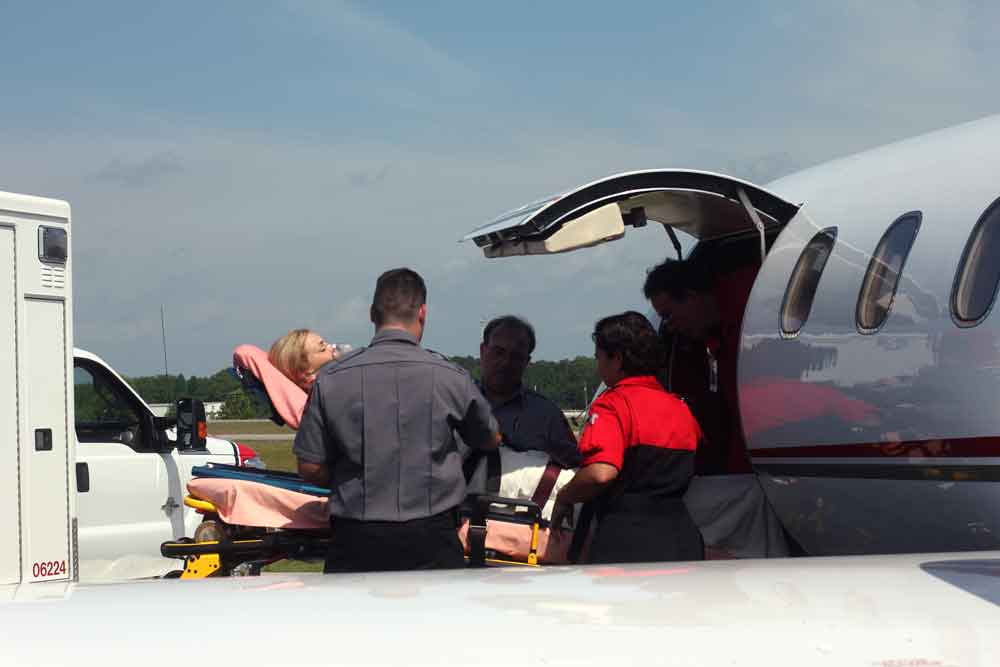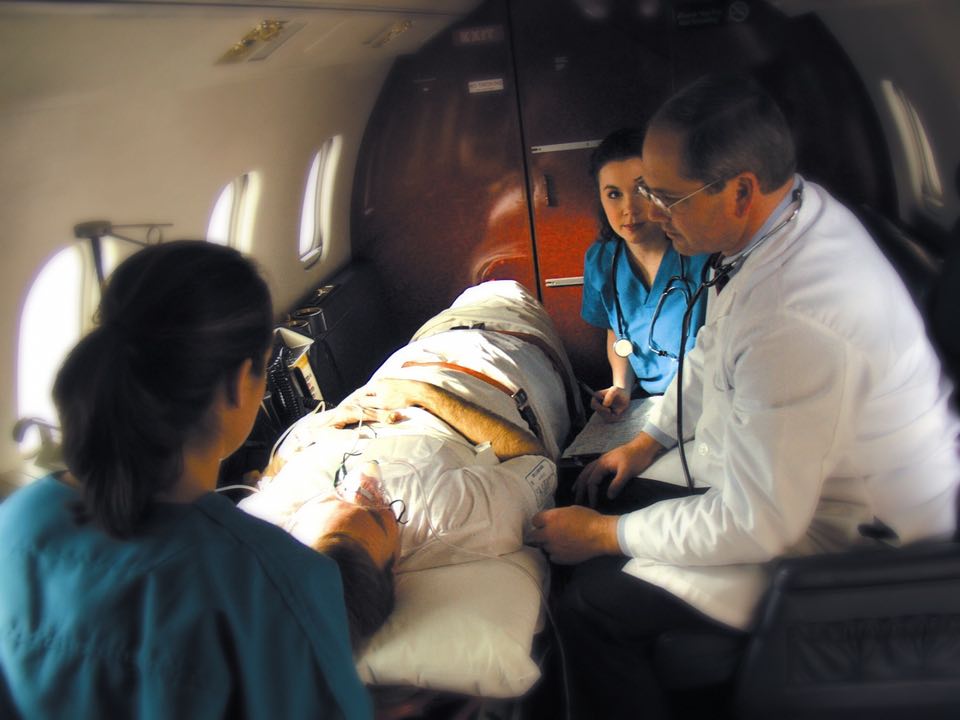by: Christopher Elliott
September 8, 2018 9:28 AM
You might be forgiven for thinking travel insurance or health insurance would cover someone like Maralyn Matlick all the way. She'd suffered an "excruciating" twisting injury to her back while skiing down Double Jack, one of Park City's legendary mogul
runs, last winter. But you'd be wrong. Instead, Matlick's medical transport membership came through for her.
Sure, her policy paid for the hospital visit at the Utah resort. But getting back to New York, where she lives, would have been up to her.

Fortunately, Matlick had a medical transport membership from Medjet, a Birmingham,
Ala., company that provides medical transport and travel security protection. It quickly arranged to have her retrieved from Park City on a Learjet 36 air ambulance.
"They picked me up at the local hospital, took me by ambulance to a tiny nearby airport, and flew me to a small airport in New Jersey where we were met by a waiting ambulance," recalls Matlick, a writer from Irvington, N.Y. "The original Utah crew stayed
with me the entire journey and literally tucked me into my bed at the New York hospital."

Do you need a medical transport membership?
With ski season just around the corner and more people than ever buying travel insurance, this is the perfect time to ask: Does my health insurance or travel insurance cover everything? Or do I need a medical transport membership, too?

“For international travel, travel insurance is important," says John Gobbels, Medjet's vice president and chief operating officer. "The medical component will typically cover your hospital bills and emergency expenses. For domestic travel, you’re
typically covered under your health insurance policy for emergencies that happen out of town. But for travelers who want to get home to recover, this is likely where both types of insurance will leave off."
Indeed, many travelers don't know that if they end up in a hospital while traveling, their insurance providers won’t necessarily get them all the way home.
"Even some of the most comprehensive insurance plans clearly state in their coverage terms that they will transfer travelers to the closest medically acceptable facility," says Gobbels. "That’s not home -- and that’s usually where you get
stuck."
Also, what your insurance provider deems "medically acceptable" might not be acceptable to you, especially if you're traveling internationally. As a consumer advocate who specializes in travel cases, I've lost track of how many people found themselves stranded in a foreign port after falling ill on a cruise. They spent a fortune getting
home.
So how do you protect a trip when travel or health insurance won't? You have to understand what insurance will cover. You also need to know your options for supplementing that coverage, if necessary. You may, or may not, decide that
you need the extra protection of a medical transport membership.

What travel insurance covers
Travel insurance experts say it's easy to get confused by insurance policies. There's so much that can go wrong when you travel. Most insurance covers "named" perils, or events named in the policy. That can make the terms and conditions a little confusing.
For example, a standard policy through Generali Travel Insurance covers
the following (bear with me):
1. Expenses incurred by you for physician-ordered emergency medical evacuation, including medically appropriate transportation and necessary medical care en route, to the nearest suitable hospital, when you are critically ill or injured, and no suitable
local care is available, subject to prior approval by us or our authorized agent.
2. Expenses incurred for non-emergency repatriation, including medically appropriate transportation and medical care en route, to a hospital or to your place of residence in the United States of America, when deemed medically necessary by the attending
physician, subject to prior approval by us or our authorized agent.
3. Expenses for transportation (not to exceed the cost of one round-trip economy-class airfare, to the place of hospitalization), and expenses for reasonable hotel accommodations, meals, telephone calls and local transportation for one person chosen
by you up to the amount in the [policy] schedule, provided that you are traveling alone and are hospitalized for more than 7 days.
4. Expenses for transportation, not to exceed the cost of one-way economy-class airfare, to your place of residence in the United States of America, including escort expenses, if you are 17 years of age or younger and left unattended due to the death
or hospitalization of an accompanying adult(s), subject to prior approval by us or our authorized agent.
5. Expenses for one-way economy-class airfare (or first class, if your original tickets were first class) to your place of residence in the United States of America, from a medical facility to which you were previously evacuated, less any refunds
paid or payable from your unused transportation tickets, if these expenses are not covered elsewhere in the plan.
As I said, it's a little confusing.
"When evaluating travel insurance policies, travelers shouldn’t focus solely on the obvious coverage options for sickness, baggage delay and missed connections," advises David Yeskel, who writes extensively about the cruise industry for travel
trade publications. "Those are important, but they’re trumped by what I consider to be the most critical travel insurance option of all: emergency evacuation coverage."
If you suffer a serious injury or illness while traveling outside North America, especially in a remote location, this becomes important. If you can’t be effectively treated at that destination, being airlifted to the nearest modern hospital is
critical.
"The cost for this evacuation – onboard a specially-equipped plane with a nurse and or doctor – can run upwards of $250,000," he says.
[Continue reading the full article here]